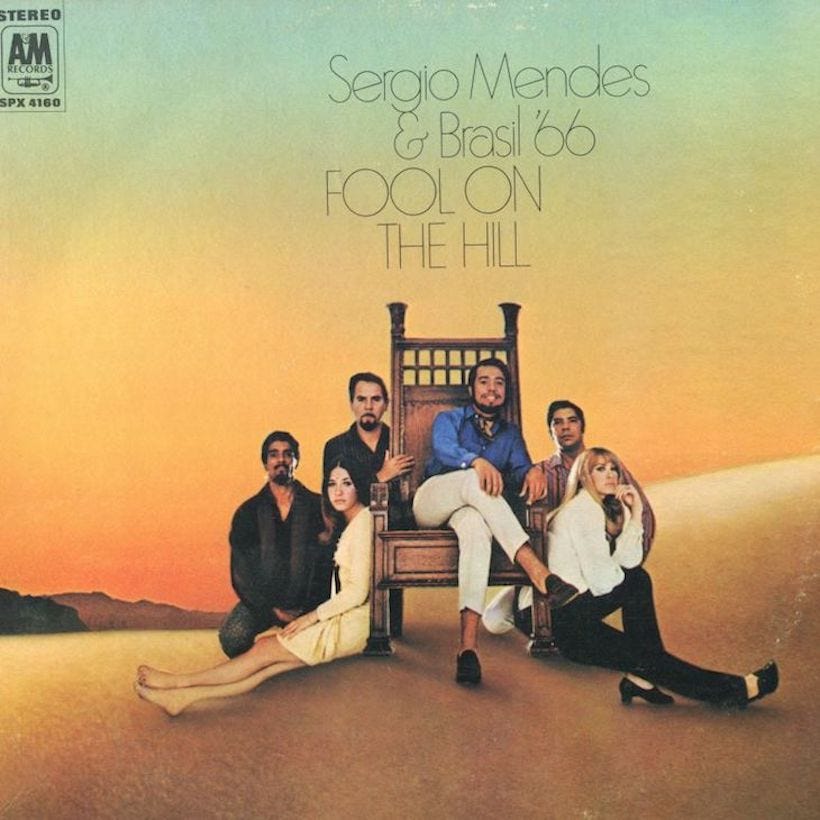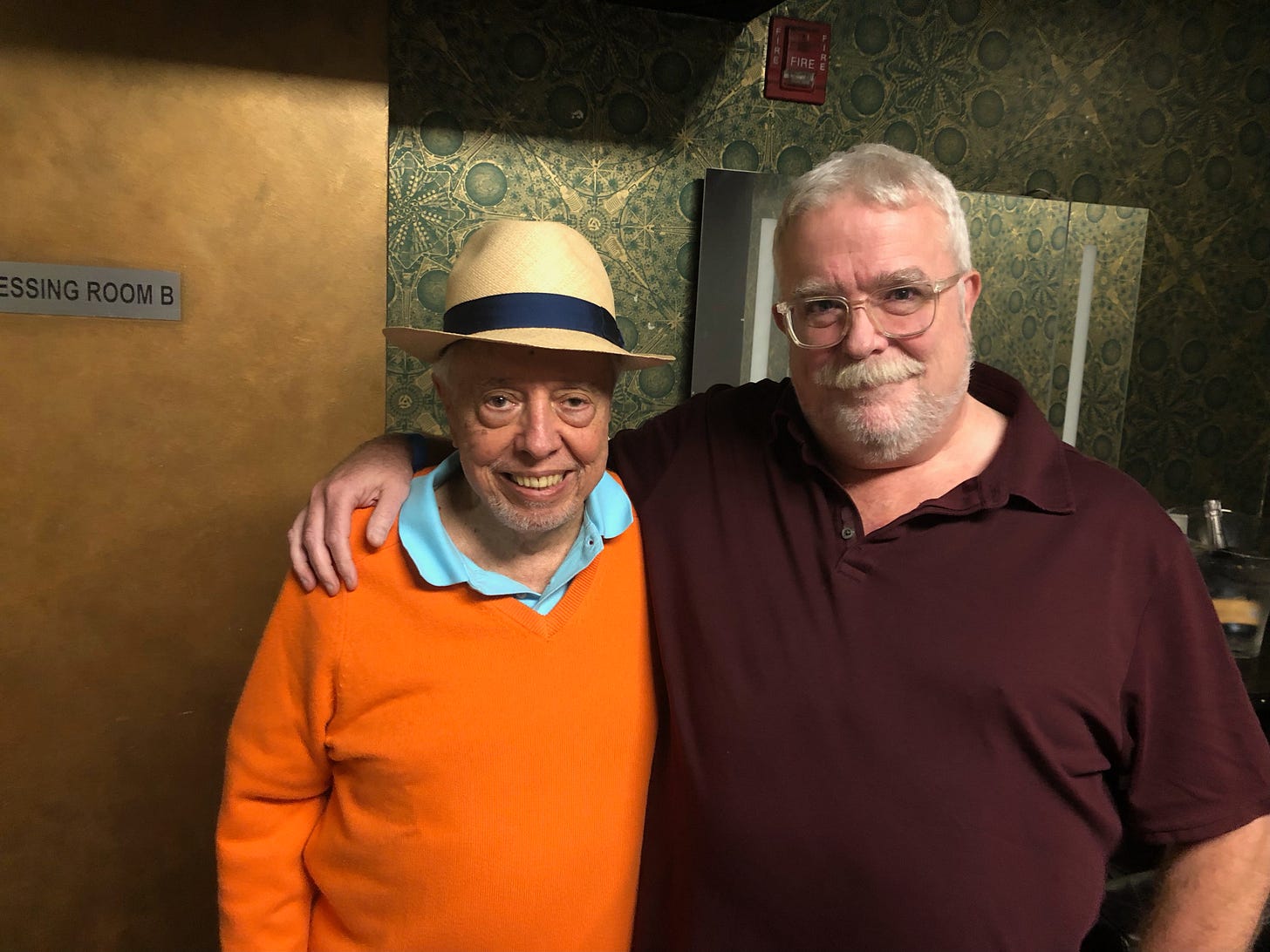TT 439: Symphonic Sérgio (guest post by Tom Myron)
context for the expanding Brazilian universe of the late '60's
(Thanks to composer Tom Myron for this insightful comment about the late great Sérgio Mendes in consort with Edu Lobo and Dave Grusin. — ei)
Sérgio Mendes created a highly personal idiom that covered a breathtaking cross-section of American popular styles. Folk, rock, jazz, musical theater and the then-emerging genre of world music were all combined with the Brazilian forms of Samba and Bossa Nova. While his friend and mentor Antonio Carlos Jobim combined Bossa Nova with the American “cool” jazz of the late 50s and early 60s, Mendes went for something more driving and bluesy. His first major group was Brazil ’66, and their biggest hit, “Mais Que Nada,” is a force of nature, with Mendes’s funky piano intertwining with sexy unison vocals and fierce Brazilian drumming.
In 1968, following the enormous success of the first three Brasil ’66 albums, Sérgio replaced his entire band, retaining only lead vocalist Lani Hall. The new lineup consisted of Los Angeles-based Brazilian musicians who were fluent across a wide range of traditional and popular styles. Sérgio also went beyond Samba and Bossa Nova and began introducing a third traditional style into his sound: the Baião of northeastern Brazil.
While Bossa Nova can be considered a suave, self-aware, and very “cool” idiom, and Samba a brash, exuberant kind of street music, both styles are fundamentally urban in orientation.
Baião is a more rural, folk-inflected idiom, featuring propulsive, syncopated, up tempo grooves and an almost minimalist approach to melodic patterning. Mendes was a fine composer himself, but he also had a genius for uplifting the melodies of the others. “Mais Que Nada” was by Jorge Ben. For the Baião, Mendes went to Edu Lobo.
The 1960s and early ‘70s were the last golden age for a certain type of pop music recording studio production, the final decade before overdubbing technology replaced the studio orchestra “everyone-together-in-the-same-room” approach. Bands and solo artists of every genre were paired by their labels on record with colorful, eclectic, and inventive accompaniments.
Often those accompaniments were symphonic. In Sérgio Mendes’s case, the symphonic arrangements were made by Dave Grusin. Grusin — who turned 90 earlier this year — has ended up being most famous for a long progression of unforgettable television themes and movie scores, but when he was young he was on the clock for the record companies, creating fashionable orchestral accompaniments for big time pop artists.
I’m a symphonic composer, someone who writes Violin Concertos and Overtures. And I’m here to tell you that, as unlikely at might seem, the symphonic productions of Sérgio Mendes, Edu Lobo, and Dave Grusin are a key influence on what I do! (While I’m talking about orchestral arrangements in my dad’s LP collection, let me also quickly namecheck Marty Paich writing for Neil Diamond, Al De Lory for Glen Campbell, Jimmy Haskell for Bobbie Gentry, and Marion Evans for Barbra Streisand.)
For me, 1968 and 1969 was the peak. I’ve been listening to both Fool on the Hill and Crystal Illusions since they were new. To this day I consult them regularly for inspiration — meaning “stuff that I could conceivably steal for my own use” — and spin them late at night for sheer enjoyment.
Fool on the Hill includes a terrific three movement, 12-minute Edu Lobo Suite. (It is not marked that way in the credits but I’m certain this effect is 100% intentional.) Movement 1, “Casa Forte,” is a brisk, pure Baião opener featuring Lobo’s typical use of "sharp scatted syllables" in place of lyrics. Movement 2, "Canto Triste,” is a lush and haunting ballad with rich string and woodwind orchestral accompaniment. And movement 3, “Upa, Neguinho,” is a raucous and playful finale with epic, growling low pedal tones from the bass trombone.
From Crystal Illusions go straight to the title track, “Crystal Illusions (Memórias de Marta Saré).”
The song, originally composed as incidental music for a stage play, is a great example of Lobo’s highly personal take on song form and melody. On this album it’s rendered as an 8 minute psychedelic Baião pop symphonic odyssey about which I have zero critical objectivity - I just love it. Dark, folkloric grooves and sweeping, cinematic melodies are blended via Villa Lobos-like octatonic scale patterns. When I was 12, this work constituted a great bridge into the worlds of Bartók and Stravinsky.
The album that proved to be Mendes’s breakthrough in America was the A&M album Herb Alpert Presents Sérgio Mendes & Brasil ’66, which included the smash “Mais Que Nada.”
In 1971 Mendes produced the A&M album Sérgio Mendes Presents Lobo. It’s a terrific way to hear Lobo’s own takes on some of the music that Mendes and Grusin recorded with Brasil ’66. The great Hermeto Pascoal plays piano and contributes additional arrangements.
I owe a particular debt to my good friend and colleague Bill Brendle, who was Sérgio’s keyboardist and music director from 1994 through 2008. It was Bill who made it possible for me to spend time with Sérgio in 2022 and 2023. The warmth, engagement and joy that come through his music so vividly were always entirely present in the man himself. — TOM MYRON





